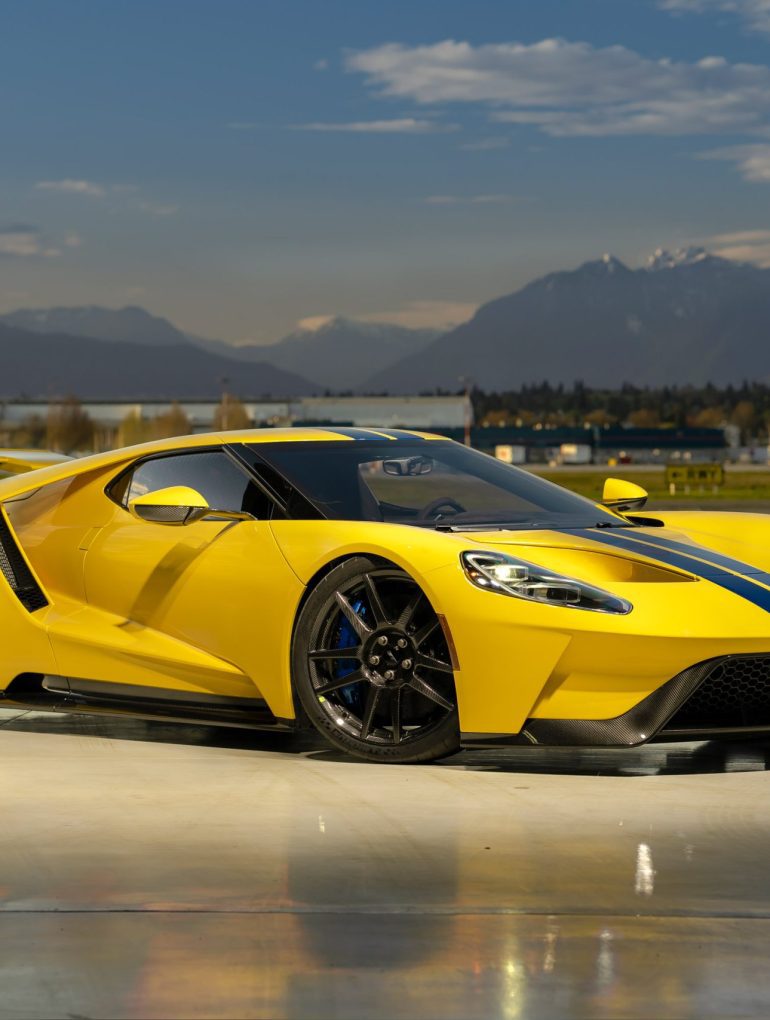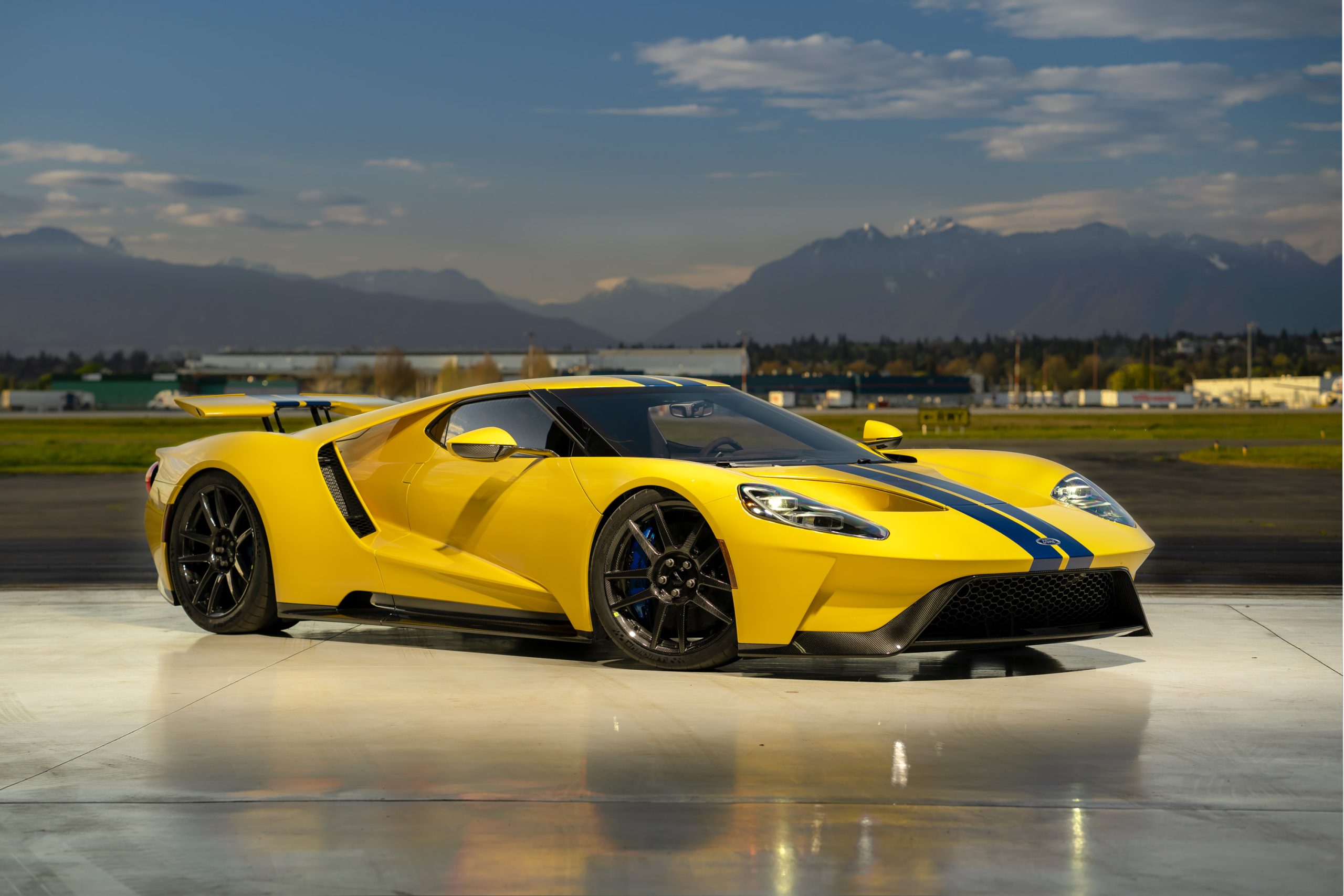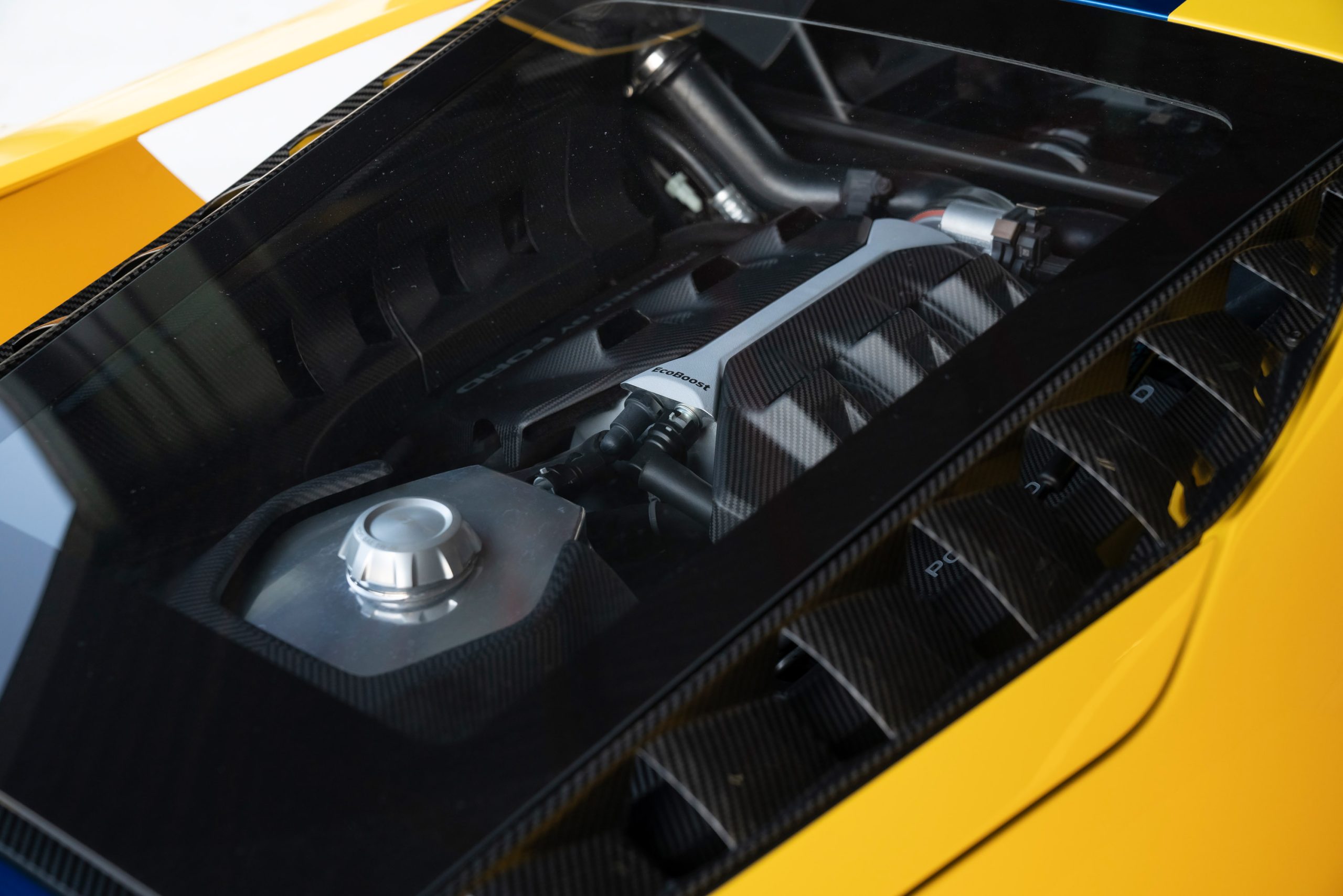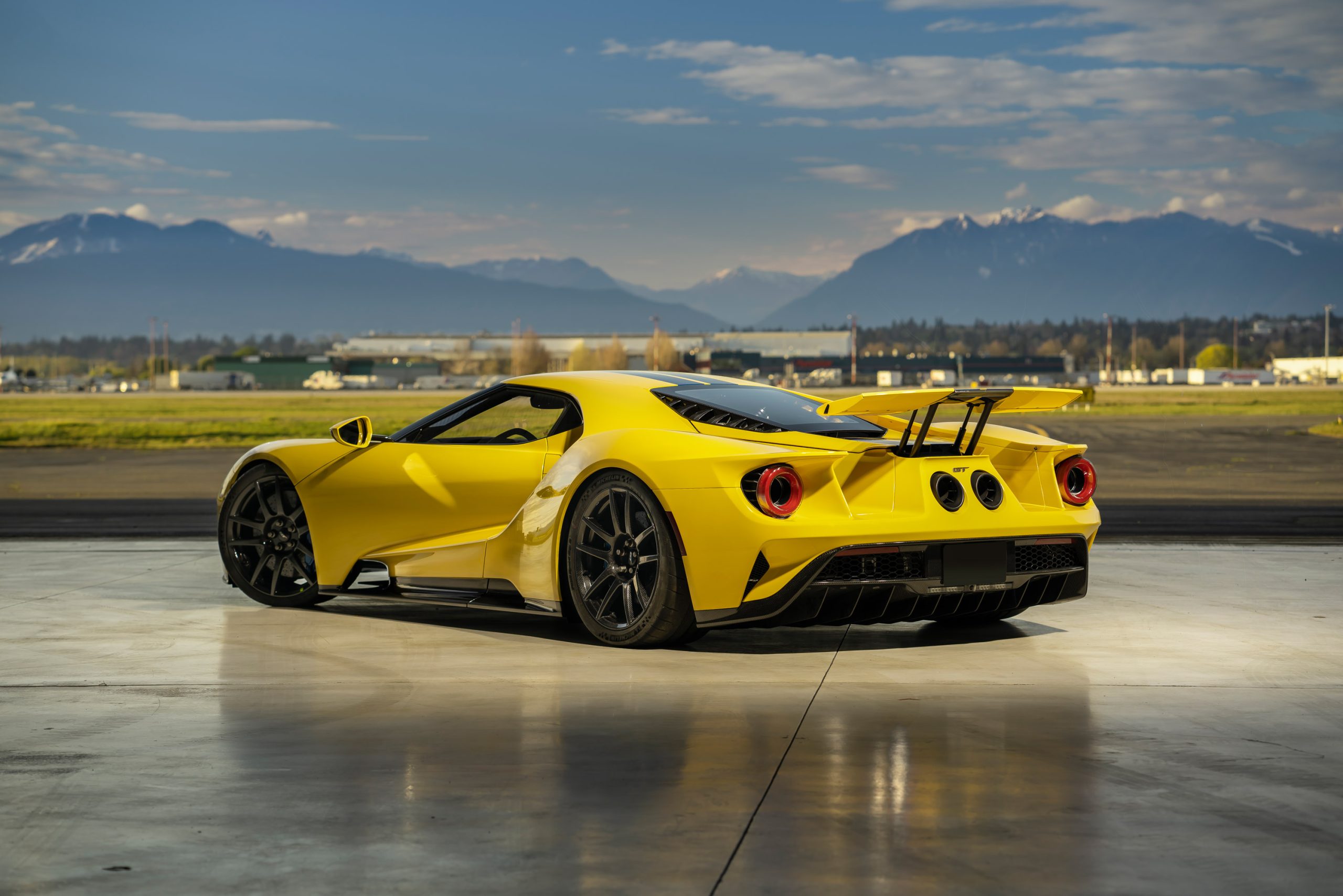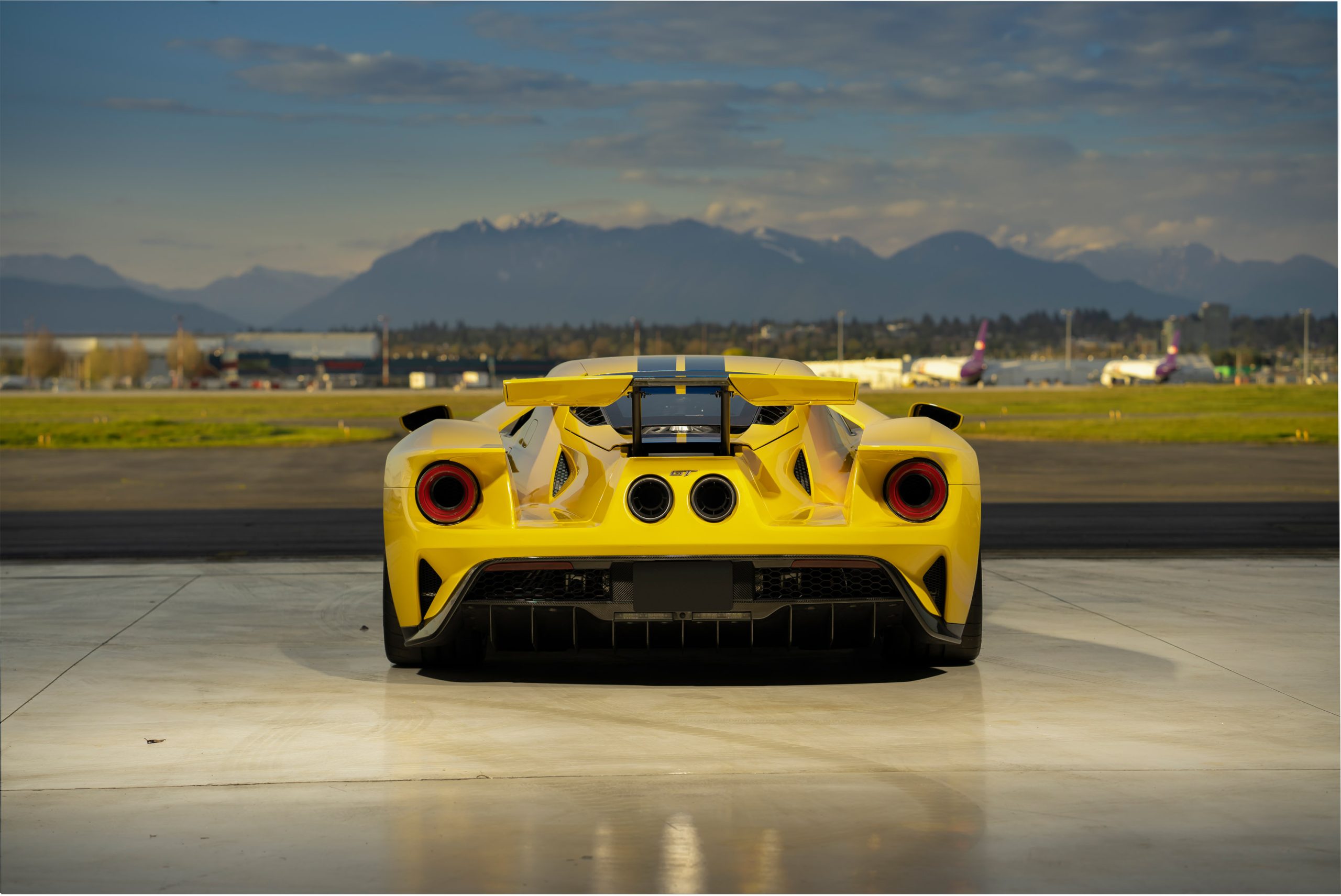Ford sent shockwaves through the automotive world in 2015 by unveiling the second generation of its legendary GT supercar at the Detroit Auto Show. This successor, arriving nearly a decade after the first GT’s 2006 production end, showcased Ford’s return to creating top tier mid-engine, motorsport-inspired machines.

The all-new GT is a symphony of performance features: a lightweight carbon-fiber monocoque chassis and body panels, a powerful 3.5-liter twin-turbocharged V6 pumping out 647 horsepower, and a lightning-fast Getrag seven-speed dual-clutch transmission. This combination propels the GT from 0 to 60 mph in under 3 seconds and on to a staggering top speed of 216 mph, necessitating the stopping power of Brembo carbon-ceramic brakes.

Designed with motorsport in its DNA, the GT integrates an FIA-homologated roll cage and technologies typically found in competition cars. Unlike its predecessor’s homage to the legendary GT40, the new GT embraces a futuristic aesthetic. The focus here is on minimizing weight and maximizing downforce, evident in the flying buttresses channeling air and the self-adjusting rear spoiler. The adaptive suspension allows for a two-inch ride height reduction, further optimizing aerodynamics.
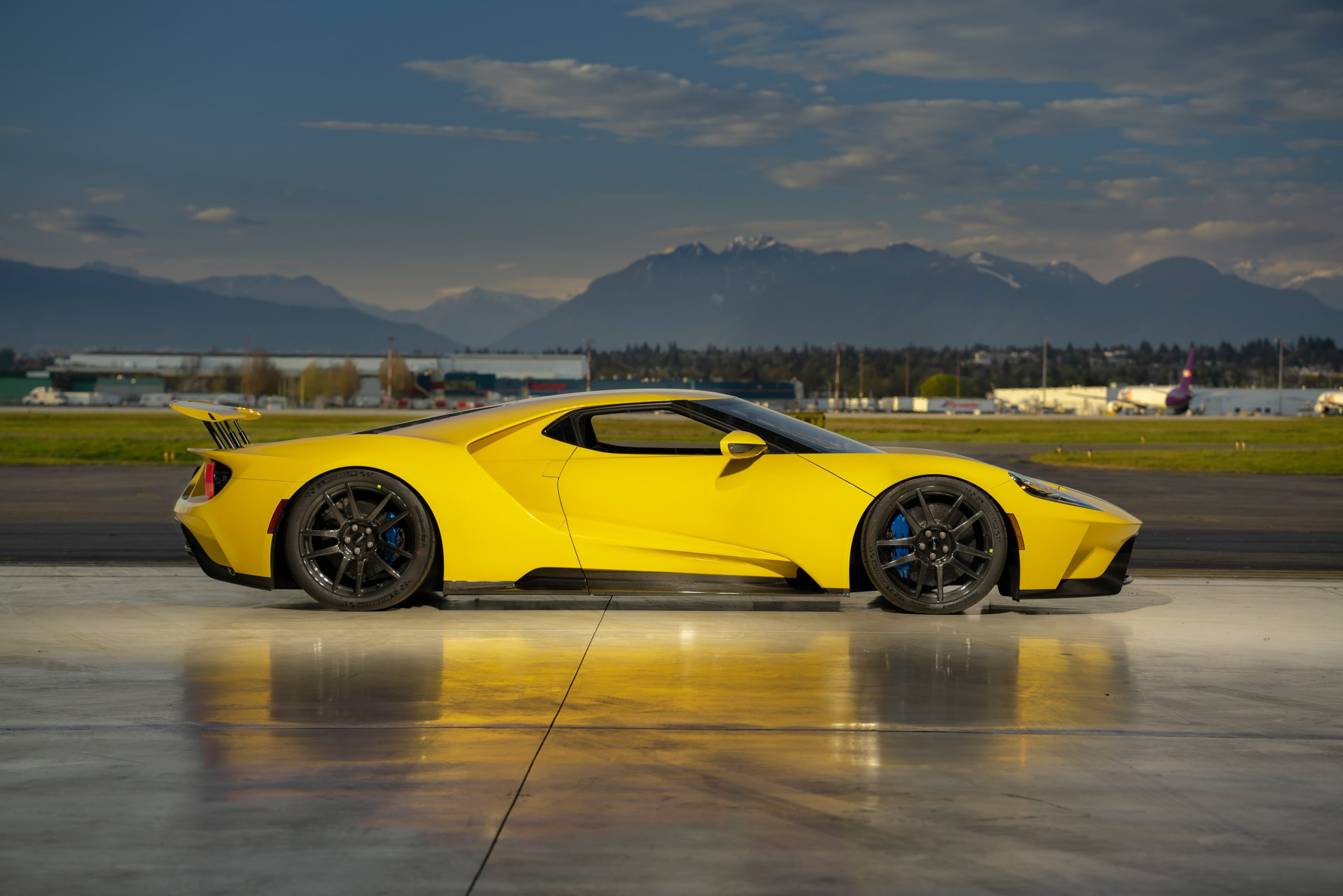
The return of the GT generated overwhelming demand, prompting Ford to implement a rigorous application process. Only the most dedicated enthusiasts were chosen, with a requirement to hold onto their cars for a significant period. Applications vastly outnumbered available units, highlighting the GT’s coveted status.
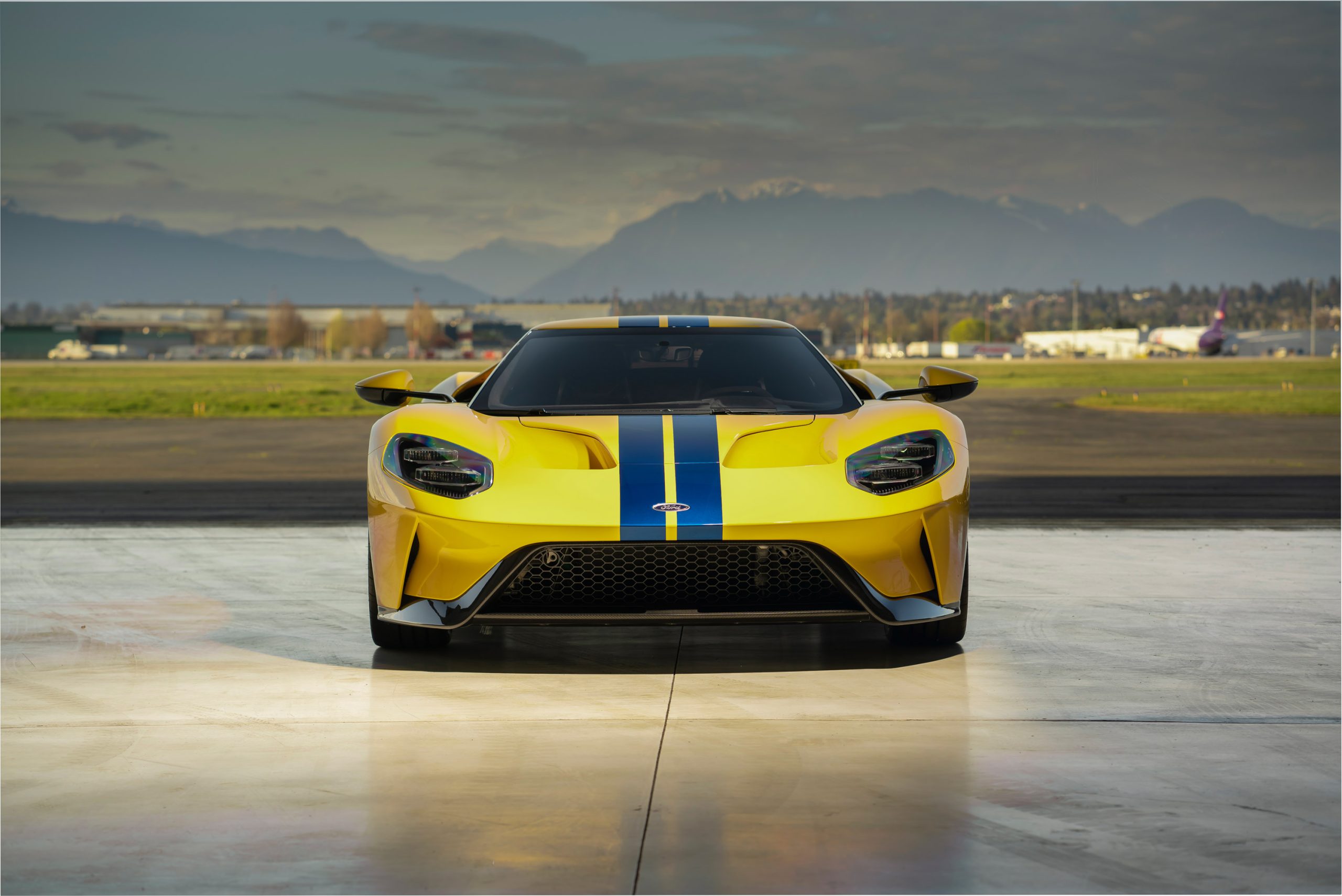
Production, limited to 1,350 units through 2022, is managed by Multimatic in Markham, Ontario, Canada. This makes the current GT significantly rarer than the 2005-2006 model, with nearly 2,700 fewer units planned.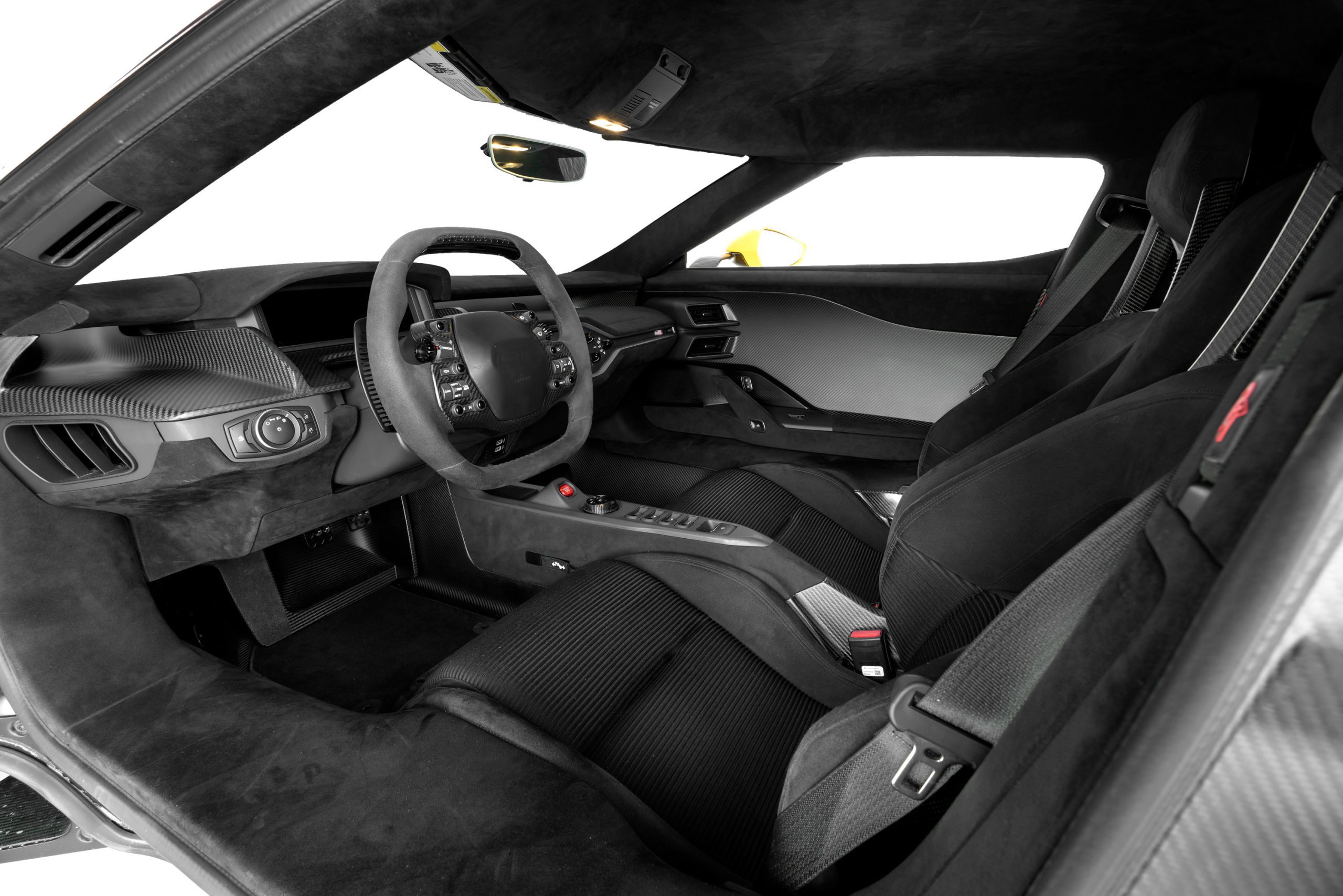


Photos by Kevin Uy courtesy of RM Sotheby’s


